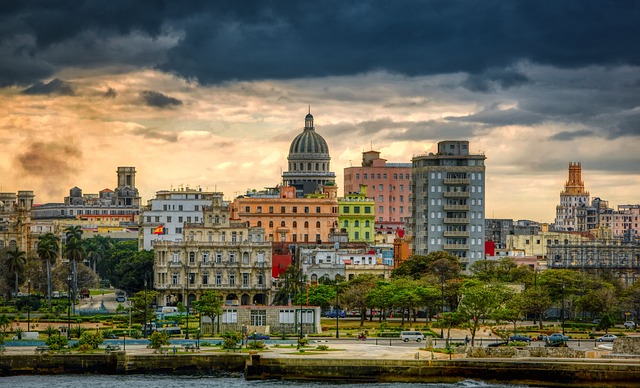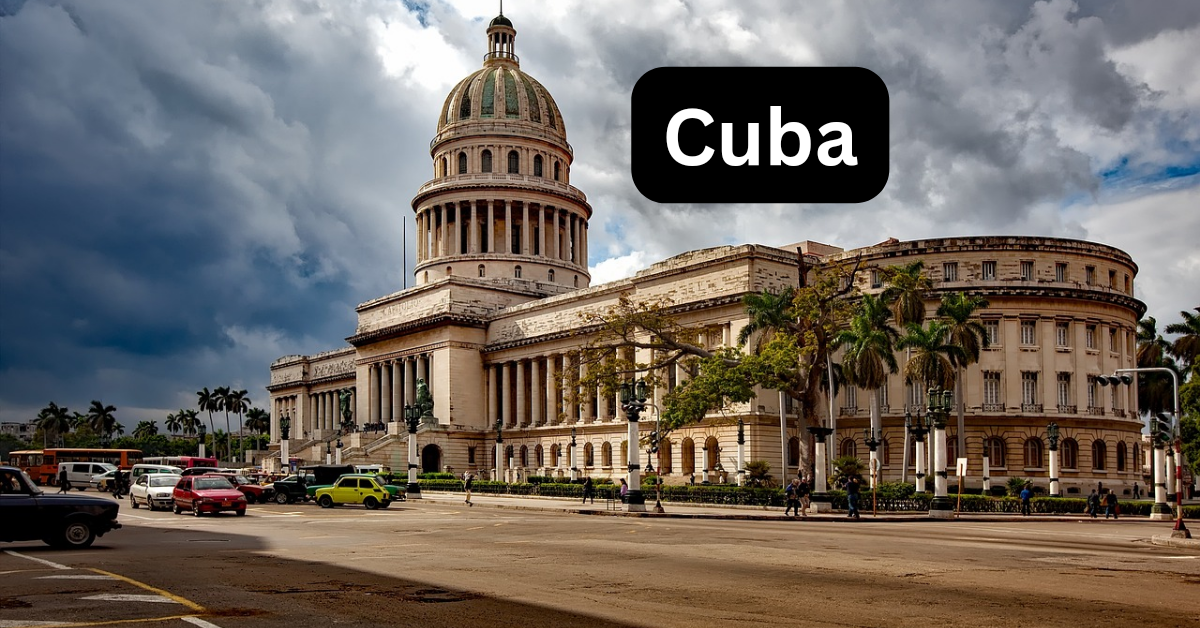Cuba, a Caribbean island nation, has always fascinated people with its lively culture, revolutionary past, and beautiful scenery. From the energetic beats of salsa music to the historic roads of Havana, Cuba is a place that combines various influences. In this extensive blog, we will explore the diverse facets of Cuba, including its history, culture, economy, and the special allure that distinguishes it from other countries.

Capital city of Cuba:
Havana is the capital city of Cuba.
Flag of Cuba:

Historical Tapestry: Cuba.
Pre-Colonial Period:
Cuba has a long history that begins with the Taíno people who lived on the island before Christopher Columbus arrived in 1492. The Taíno culture had a significant impact on Cuba’s early history, with their unique pottery and ceremonial traditions.
Spanish Colonisation:
Diego Velázquez, along with the Spanish conquistadors, took control of Cuba for Spain during the 1500s. This period of colonisation brought about the creation of sugar plantations and the arrival of African slaves, which greatly influenced the island’s population and culture.
Struggle for Independence:
Cuba’s struggle for autonomy from Spanish domination gained traction during the 1800s, reaching its pinnacle with the Spanish-American War of 1898. The subsequent Treaty of Paris bestowed independence upon Cuba, albeit with certain levels of involvement from the United States.
Cuban Revolution:
In the middle of the 20th century, a major event took place in Cuban history – the Cuban Revolution led by Fidel Castro and Che Guevara. This revolution happened in 1959 and changed Cuba into a socialist country, impacting its history and relationships with other countries.
The Cuban Culture: Cuba.
Music and Dance:
Cuba’s music and dance scene is truly vibrant. The energetic rhythms of salsa, rumba, and mambo can be heard throughout the streets, captivating people from all over the world. Discover the origins of Afro-Cuban beats and the development of music in Cuban culture.
Cuisine System:
Cuban food is a delicious blend of Spanish, African, and Caribbean flavours. From the famous Ropa Vieja to the comforting Moros y Cristianos (black beans and rice), Cuban cuisine provides a one-of-a-kind culinary adventure. Explore the tasty delights that make Cuban food a true celebration of flavours.
Architecture:
Havana, the capital, has a mix of colonial, baroque, and neoclassical buildings. Walk around Old Havana’s vibrant streets, a UNESCO site, and learn about important landmarks like El Capitolio and Castillo de la Real Fuerza.
Socioeconomic Landscape: Cuba.
Economic Challenges:
Cuba has encountered economic difficulties, especially following the downfall of the Soviet Union, a major supporter. The U.S. trade blockade, enforced since the 1960s, has also had a notable influence on Cuba’s economic path. Analyse how these elements have affected the nation’s economy and the determination of the Cuban population.
Healthcare and Education:
Cuba has excelled in healthcare and education despite facing economic challenges. The nation’s focus on these areas has resulted in high literacy rates and a healthcare system that is highly praised worldwide. Explore the distinctive features of Cuba’s healthcare and education systems.
Natural Beauty: Cuba.
Pristine Beaches:
Cuba’s shores are embellished with immaculate beaches and transparent waters. Discover the breathtaking splendour of Cuba’s coastal gems, ranging from Varadero to Playa Paraíso, and their significant allure for global tourists.
Breathtaking Landscapes:
Cuba offers more than just beaches, with a variety of landscapes like tobacco fields in Viñales, the Escambray Mountains, and the Ciénaga de Zapata, a UNESCO Biosphere Reserve. Explore the natural beauty that makes Cuba a haven for nature lovers.
Tourism and Beyond: Cuba.
Tourism Industry:
Cuba’s tourism sector has played a major role in boosting its economy. The charm of classic cars, colonial buildings, and the lively culture has turned it into a popular destination for travellers. Analyse how tourism in Cuba has changed over time, its influence on the local economy, and the obstacles faced by the industry.
Challenges and Opportunities:
Cuba is undeniably attractive, but it also faces difficulties. Discover topics like politics, human rights, and the balance between preserving its culture and embracing globalisation.
Conclusion:
Cuba is a special gem in the Caribbean, known for its fascinating history, lively culture, and stunning scenery. The island’s past echoes with revolution, while its music fills the air with rhythmic beats. This journey has only just begun to uncover the many layers of Cuba’s allure, inviting readers to discover its hidden secrets, face its challenges, and embrace its timeless charm.

